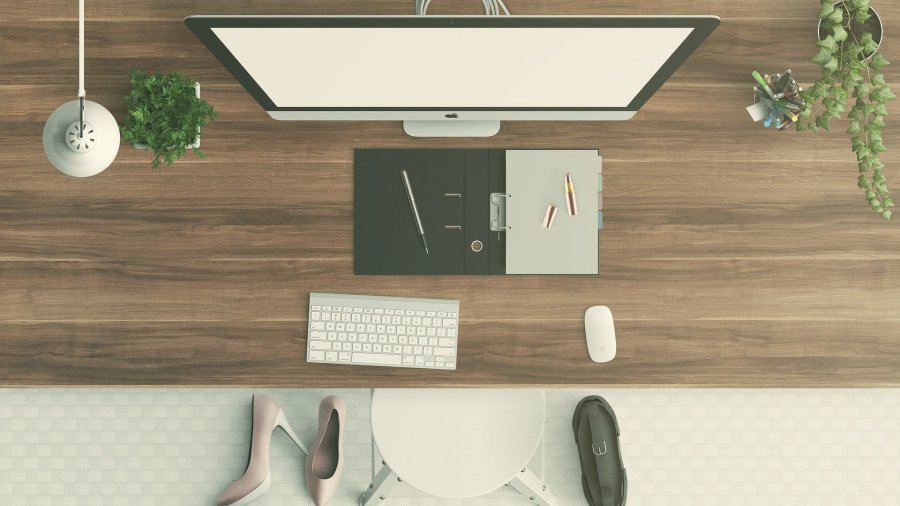Working@Home
22.05.2020 For many, almost 10 weeks of Working@Home are now behind us. Some helpful routines have been formed in the meantime, new tools and efficient working techniques have been learned and the state of emergency has created a strange, new everyday life. And yet now comes a dry spell. This way of working is reaching its limits. Colleagues are missed more, the spatial separation of our life areas is painfully missing. The urge back to the “workplace” is felt everywhere. Just in case it goes on like this for a few more days or weeks or if Working@Home becomes firmly established again: Here are a few tips from companies, freelancers and bloggers on how home office works.
The workplace
“As you’ve made your bed, now you must lie in it,” says the people. This applies not only to the choice of mattress, but also to the choice of a suitable workplace. Depending upon the possibilities of the own home naturally. Ideal is a delimited area with table and ergonomic chair with lateral light and a clean working environment. This prevents distractions. For those who do not have a home office, order helps. Please put away everything that is not needed for working. Sometimes a visual change, such as a cloth, can also help, giving the table a new appearance and the head a new way to switch to work mode. For days when you need special motivation, a small bouquet of flowers or a motivating picture next to the laptop may also help. The phenomenon that the outside can influence the inside and vice versa is not unknown. Everybody knows that in a suit or evening dress you move and behave differently than in a jogging suit. How was it with the control and the jogging pants, dear Karl Lagerfeld? And that brings us straight to the second tip: the clothing.
The clothes
It is best to choose exactly the same clothes that you would wear in the office. Those who usually dress more casually in jeans and polo shirt or sweater will keep that in mind. In other industries, a shirt or blouse may also be appropriate. Shoes can also help to switch to “work mode”. The posture is immediately more upright and the head gets the impulse to switch to “work mode”. Also, one performs better during (many) video conferences.
The structure
Working@Home lacks a spatial structure and a clear separation of living areas. This makes it all the more important to be well organized in terms of time. On some days fixed appointments from outside help, such as video calls, remote workshops, jour-fixed appointments with the boss, team or customers. If this framework is missing, it is a good idea to create a fixed rhythm. Those who have fixed reachability from their company are usually sitting at their desk from 9 a.m. to 5 p.m. and can be reached. After that is “end of work”. How meaningful these rules are is debatable. This varies depending on the business model and type of person. After all, there are many studies on the different daily and working rhythms of people. In science, a distinction is made between larks, owls or other types. An added value offered by the home office is certainly to be able to better accommodate individual inclinations. Why not go to the virtual school with the children for an hour in the morning, as is currently required? But then in the evening between 19.00-20.00 o’clock again process the e-mails. Current collaboration platforms provide excellent support for this. It is easy to leave a message there when a person is “on” or “off”.
The breaks
Breaks are especially important in the home office. Various researches have come to the conclusion that breaks are creative and efficient. After about 90 minutes our brain is exhausted and needs a short break. After about 4 hours, a longer break is recommended. The eyes are also grateful for a screen break. Don’t forget to move, another tip – all experts agree on this. Not only that especially people who are on the move in creative professions often describe the phenomenon, the best ideas would come in the shower, during sports or while sleeping. Every person has the natural need to move. With Working@Home and the maximum between the kitchen and bedroom, this can be clearly neglected. Little rituals can help here, such as stretching from the “desk” every time you get up or circling your shoulders after every “call”.
The Mental Hygiene
The right mindset is the key to success, experts today also agree on this. Especially in the home office, self-management, motivation and self-discipline are the decisive success factors. Here it comes again and again to overlapping of the different roles and areas of life. So it’s good to always be clear about what’s coming up and what’s not. What is allowed is what helps. Some people find 5 minutes of morning meditation helpful, others use visualizations, to-do lists or the handwritten marker on the kitchen door. It is recommended to take a short break to realign yourself and to reprioritize if necessary. And above all, to allow yourself to take time off from family and work at home, as well as “doing nothing” just for yourself.
The future of Working@Home
At present, no one can predict how Corona will change our working world. Digitization has already gained momentum. So has creativity, solidarity and openness to New Work. Steve Galveski describes five different stages of remote work on Medium.com. From stage 1 “Non-Deliberate Action” to stage 5 the “Nirvana”, in which the virtual office no longer tries to copy the physical office, but defines its own rules through clever use and thus becomes more productive. Well, we´ll see. In any case, it’s a good idea to take a look at how Working@Home works sustainably. From now on it is part of it.



